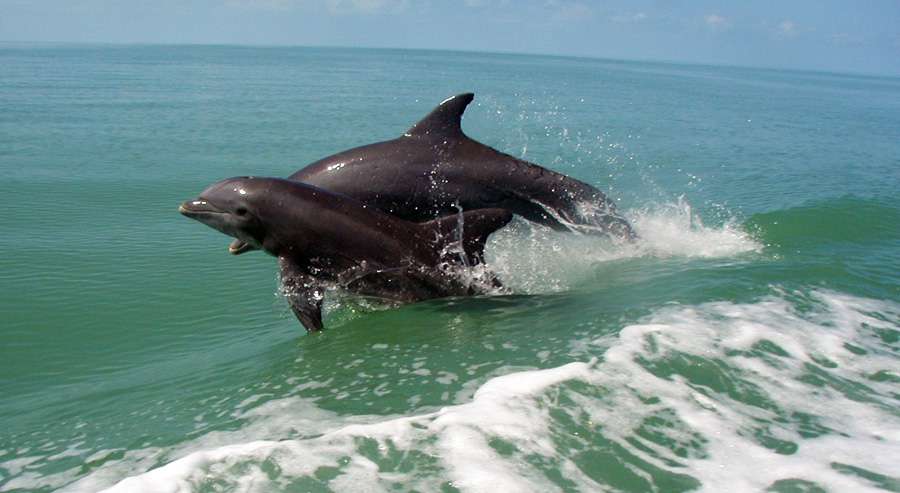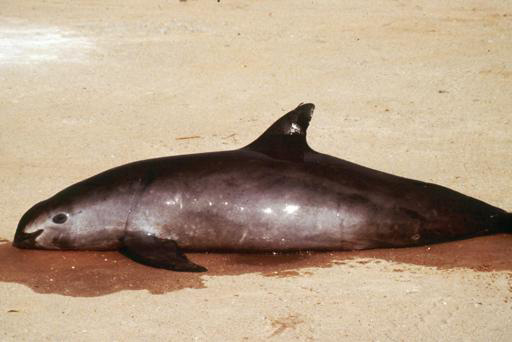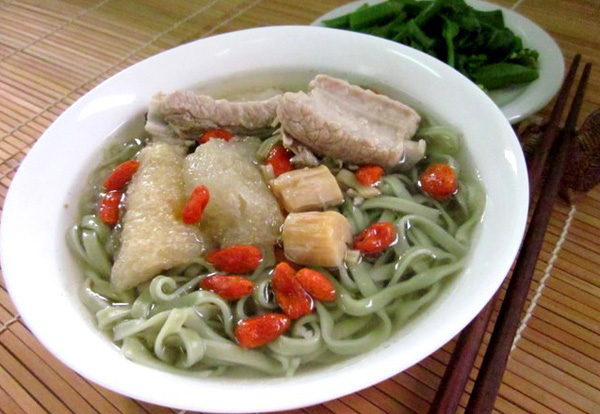We recently shared with you the tragic story of the Totaba – a highly endangered fish in the Sea Of Cortez on the brink of extinction due, in part, to poachers. According to a new environmental report published Friday, August, 1, those same poachers who are gillnet fishing in the upper Sea of Cortez has now pushed the vaquita, the world’s smallest porpoise, to extinction. The porpoise are caught as bycatch in the nets intended to catch the totoaba, and killed in the process.
The vaquita porpoise lives in just one place on earth: the Gulf of California, located between the Baja California Peninsula and mainland Mexico. They have a large dark ring around its eyes and dark patches on its lips that form a thin line from the mouth to the pectoral fins. Its dorsal surface is dark gray, sides pale gray and ventral surface white with long, light gray markings. Newborn vaquita have darker coloration and a wide gray fringe of color that runs from the head to the dorsal flukes, passing through the dorsal and pectoral fins.
The vaquita were first discovered in 1958, according to the World Wildlife Fund, and now are considered critically endangered. Studies conducted in 2014 found only half as many vaquita as found in 2012, and the number of vaquitas counted has dropped steadily since around 2010, when Mexican authorities also noticed an uptick in illegal fishing for totoaba, which has been fished almost out of existence. Despite nearly two decades of efforts by Mexico to save the vaquita, experts believe that there are fewer than 25 remaining vaquitas are reproductively mature females, and likely less than 200 vaquitas left in existence. The outlook for the totoaba is nearly as grim.
“It was just a total ecological mess,” Barlow said. The northern Sea of Cortez, however, “is relatively pristine and the only thing that’s preventing the (vaquita) species from surviving is gill netting.
The committee urgently recommends extending a total ban on using, possessing or transporting gill nets in the western corner of the upper Sea of Cortez. Gill nets are very large, and often are left out for days at a time, and catch everything that swims by. Because the totoaba is protected and fishing for it is illegal, the nets often are strung up surreptitiously at night and left unattended, increasing the potential of catching unintended species.
Capturing vaquitas to breed them in captivity isn’t an option, the report concluded, because it would not be feasible to capture or hold a sufficient number of them to develop a captive breeding program. Furthermore, with so few vaquitas spread over such a wide area, chasing down and catching them would risk killing off the few remaining individuals.
“They would probably die in the attempt” to capture them, Vidal said.
There is one piece of good news, however. According to vivavaquita.org, “Unlike some endangered species that have no place left to live in the wild, the vaquita’s home in the Gulf of California is clean and healthy. The only real problem is the gillnets that entangle and kill vaquitas. If these can be moved out of the small area where vaquitas occur, the species will likely recover.”
If you would like to contribute to the vaquita recovery fund, please click here for more information.



